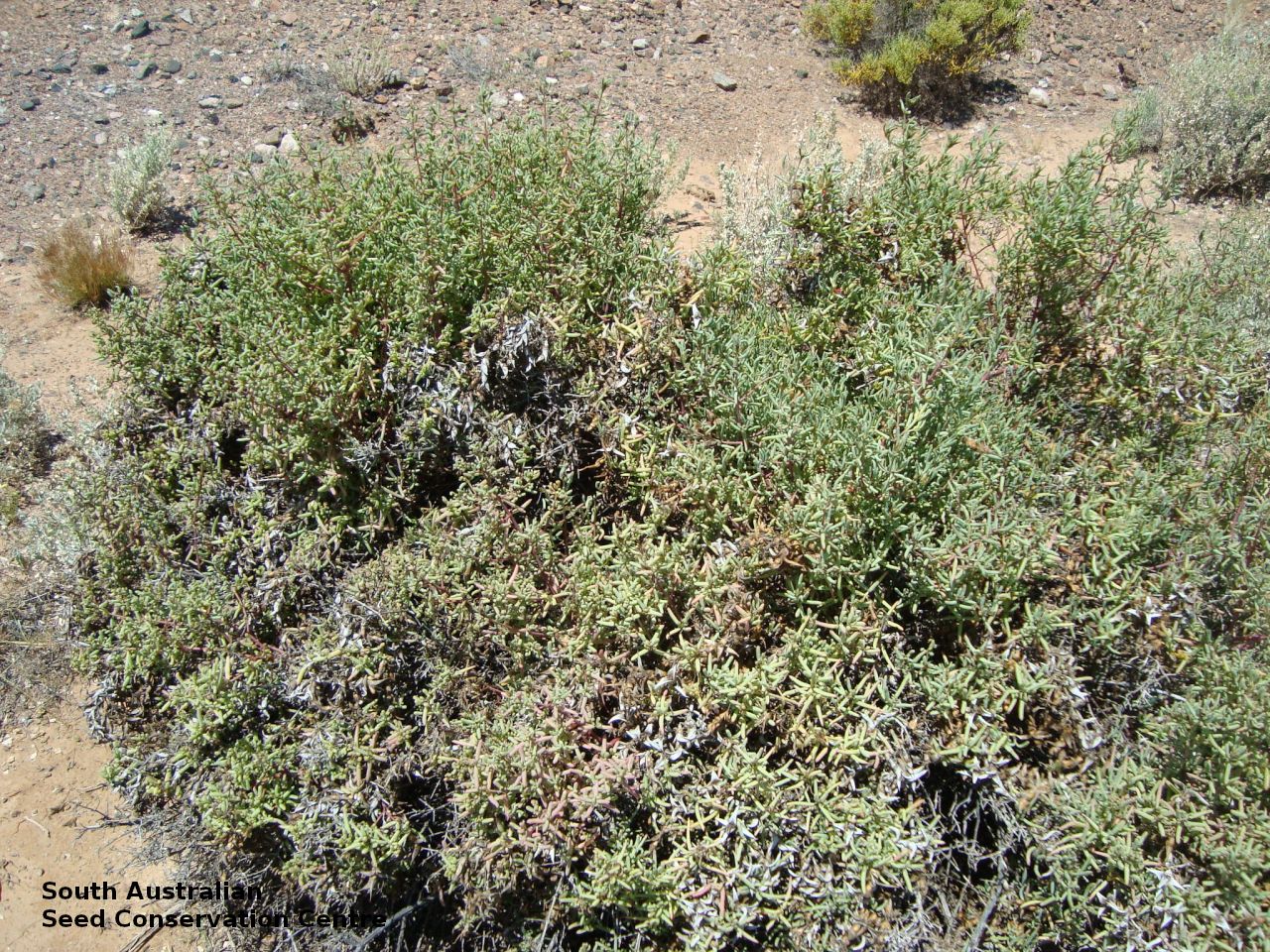
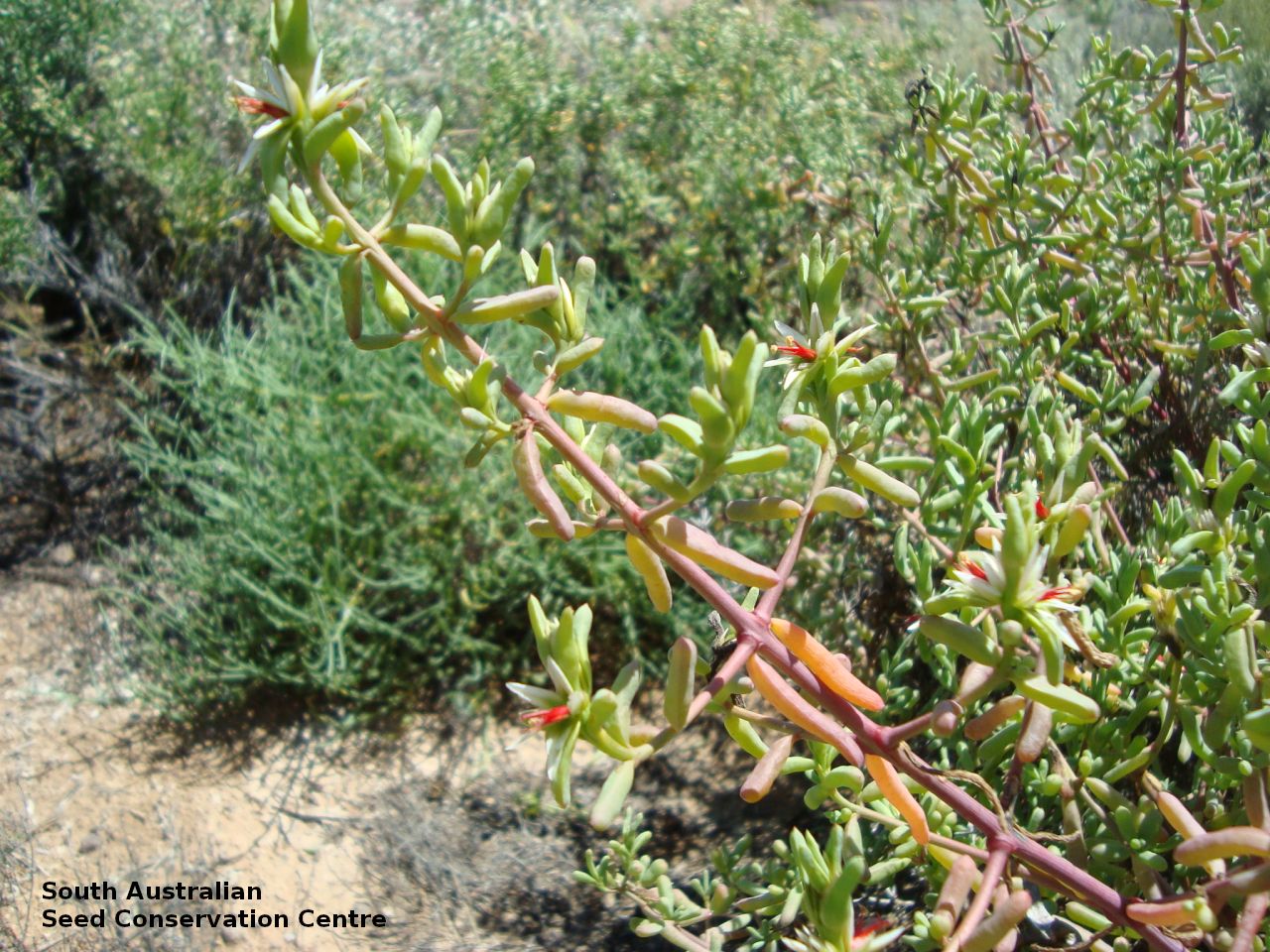
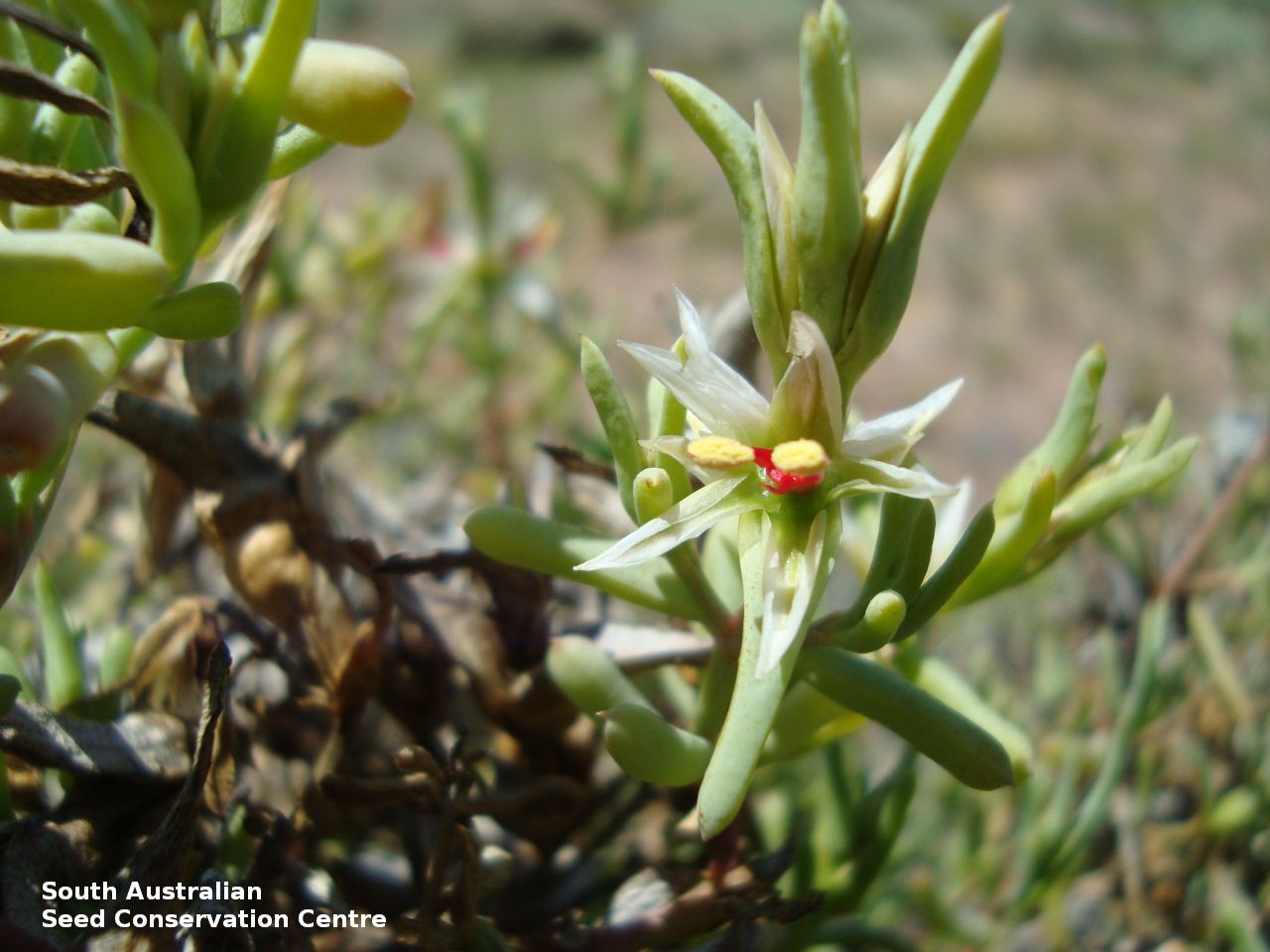
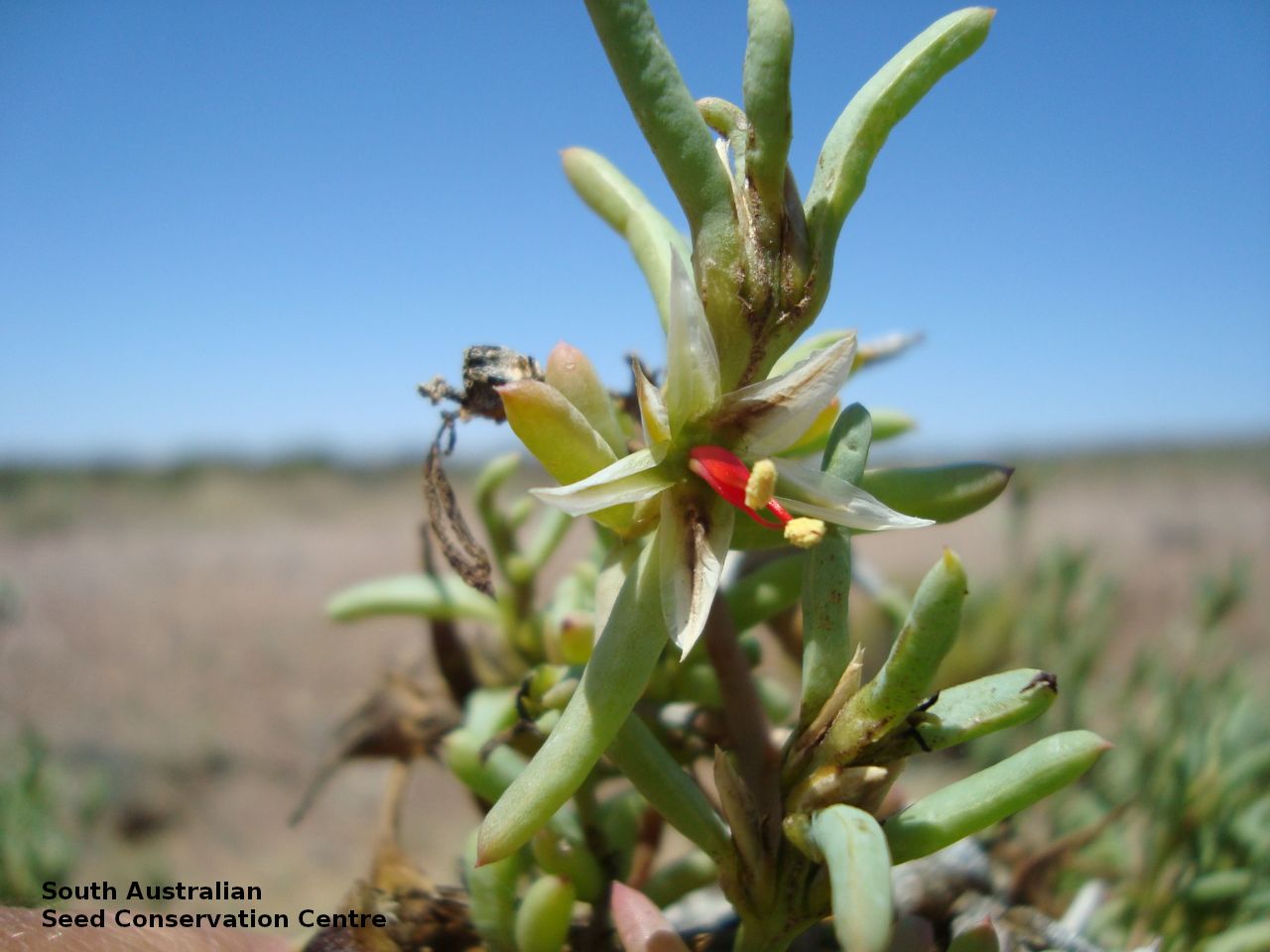
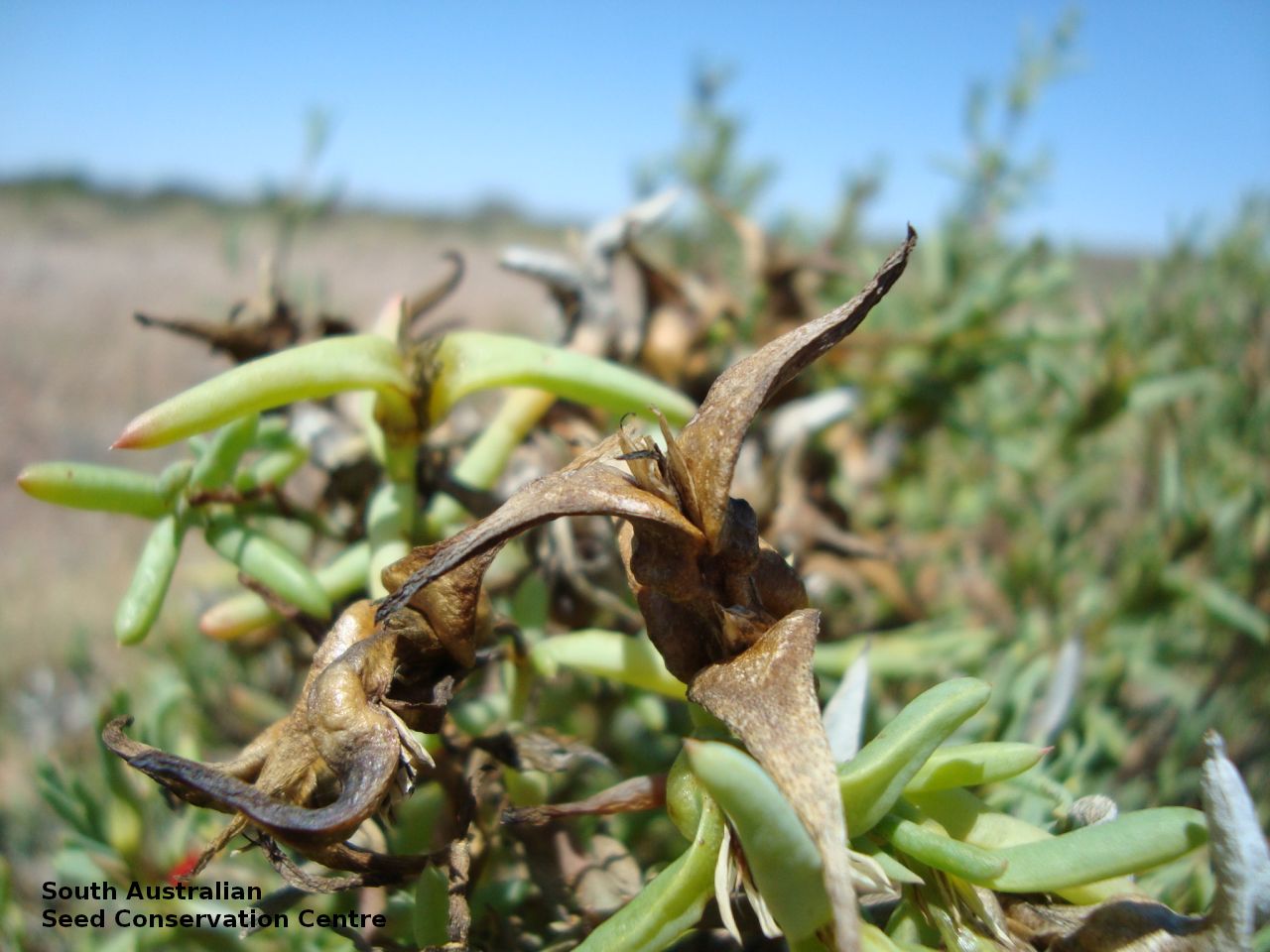
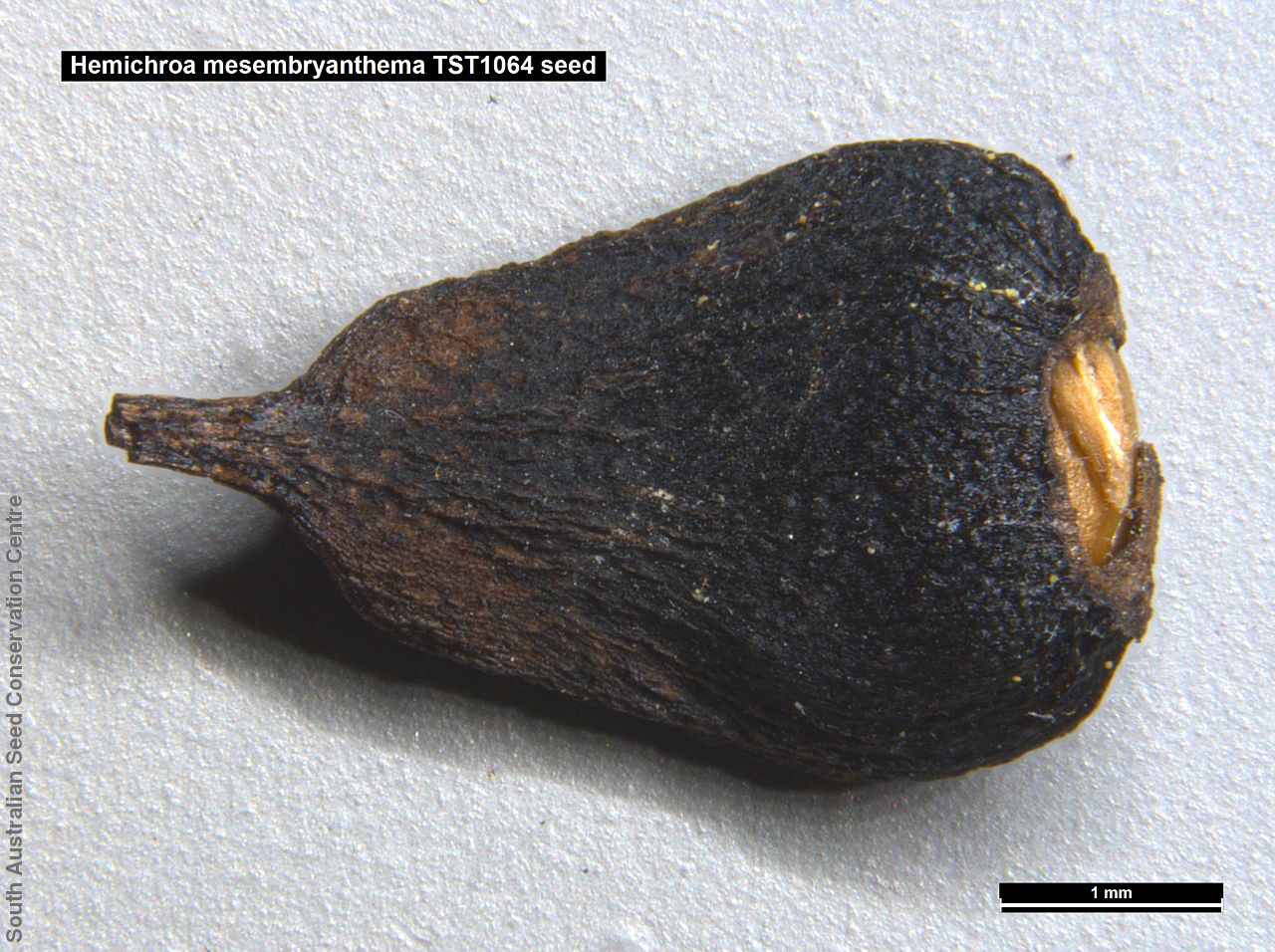
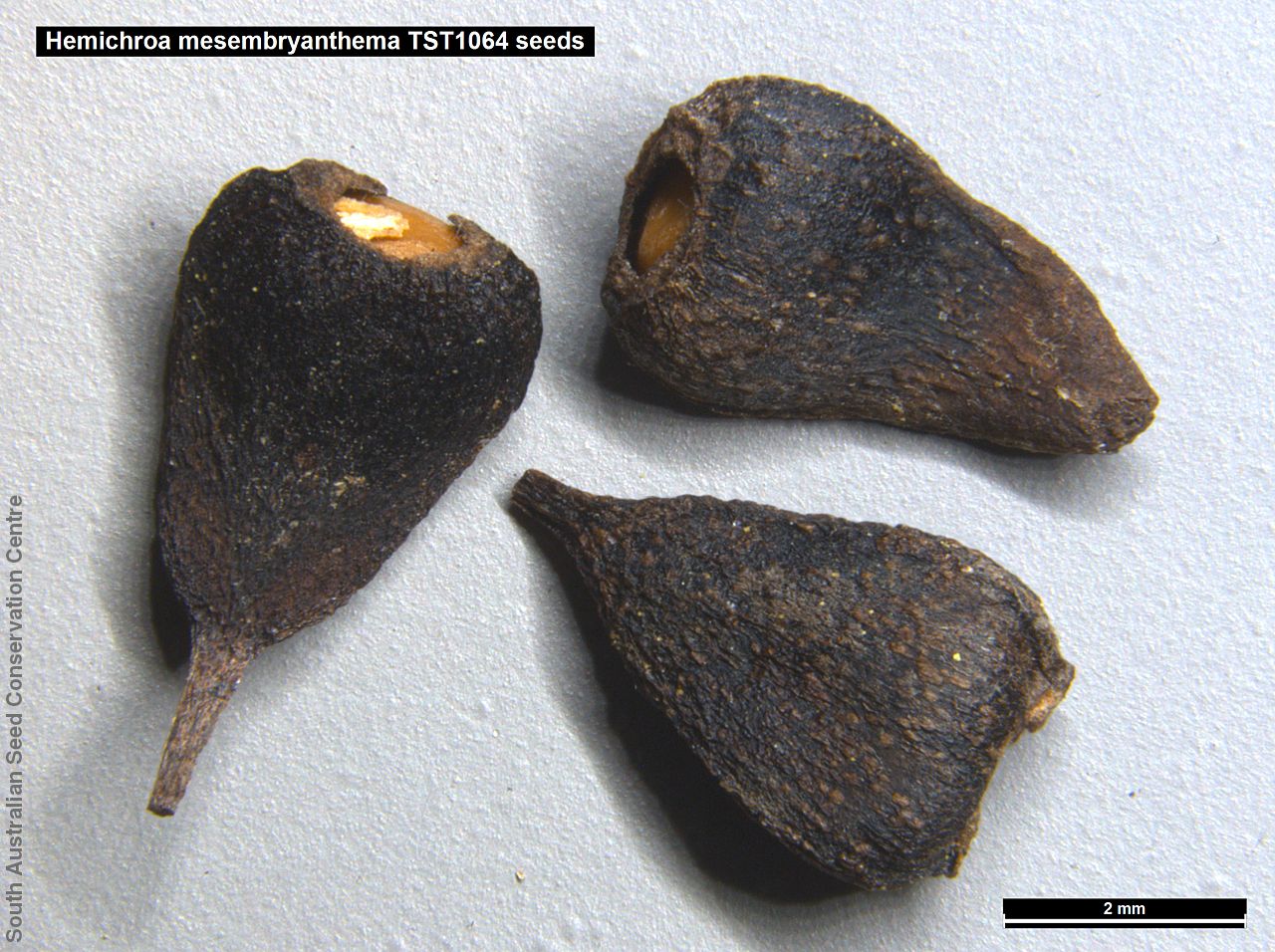
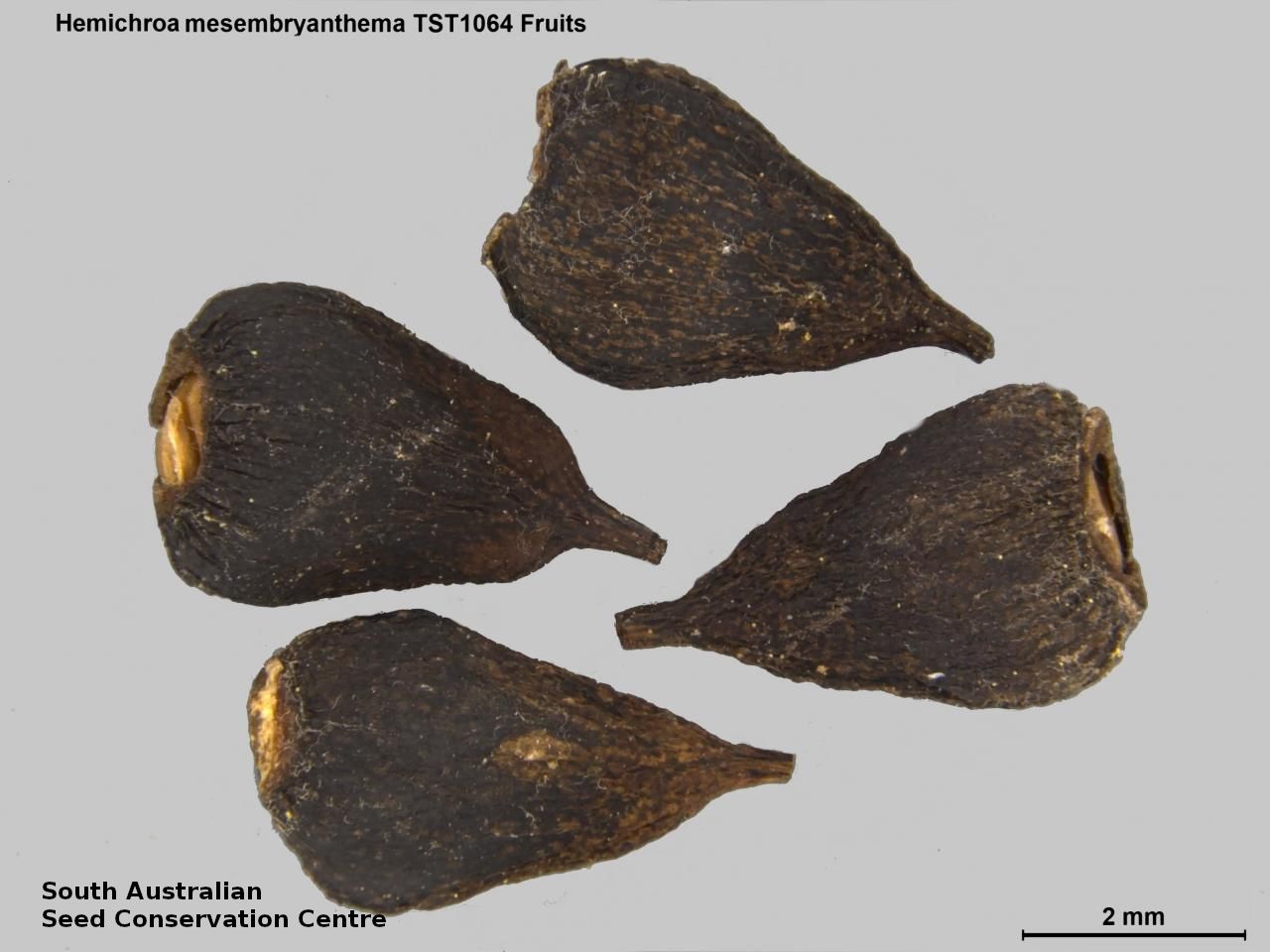
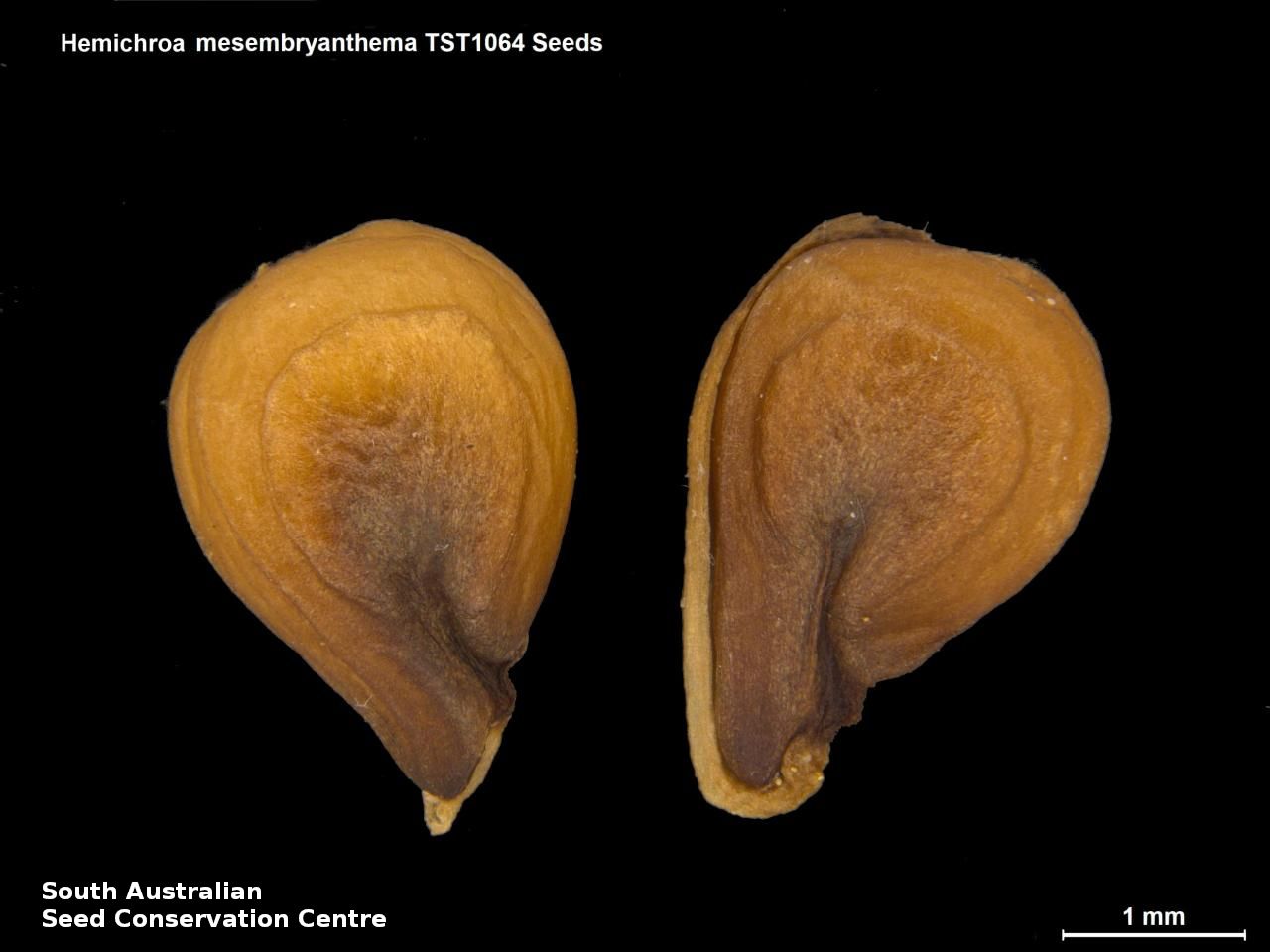

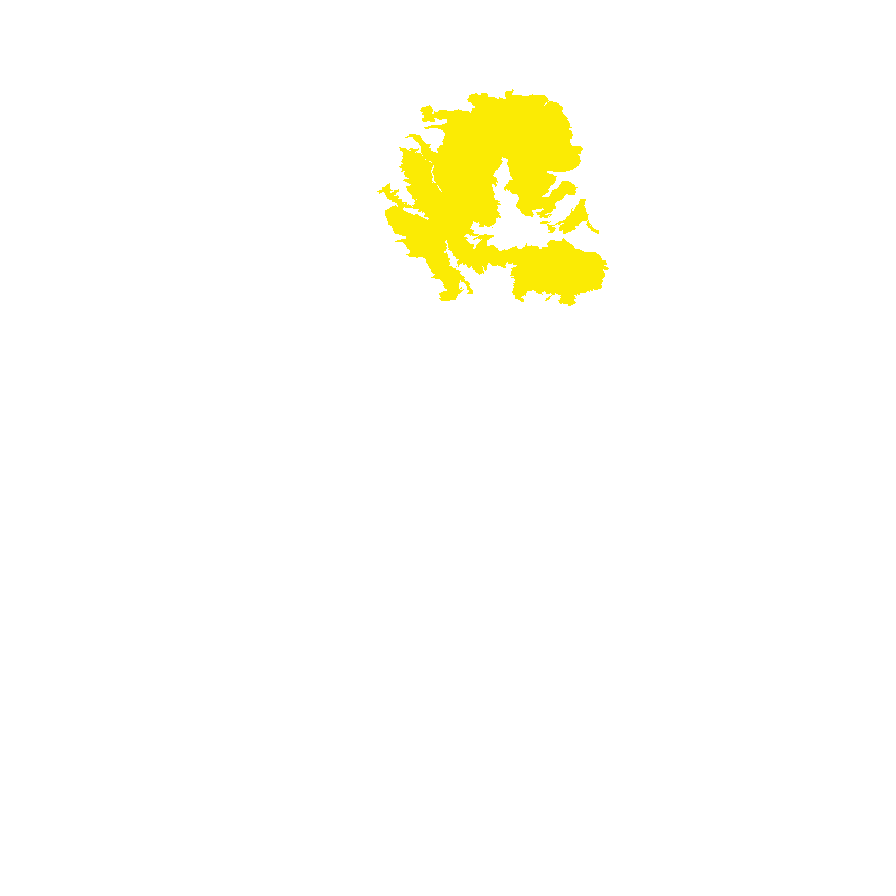
Botanical art
Etymology
Hemichroa from the Greek 'hemi', meaning half and 'chroa', meaning colour, referring to the perianth of Hemichroa pentandra which is sometimes pink inside; whitish outside. Mesembryanthema from the Greek 'mesembria', meaning noon and 'anthemon', meaning flower, alluding to the flowers blooming at noon.
Distribution and status
Found in the north central part of South Australia, growing with samphire and chenopod species on low-lying flats, mound springs, or along drainage systems in saline clay loam. Also found in Queensland. Native. Rare in South Australia. Uncommon in Queensland.
Herbarium region: Lake Eyre
NRM region: South Australian Arid Lands
AVH map: SA distribution map (external link)
Plant description
Erect, bushy, woody shrub to 150 cm high with branches divaricate, finely striate, glabrous or papillose; often spine-tipped. Leaves grey-green, opposite to 20 mm long and 4 mm wide . Flower-spike solitary, axillary, with white and to pink flowers and red stamens, Flowering between March and April. Fruits are brown woody fruit, persistent in bract axils. Seeds are brown pear-shaped seed to 3 mm long and 2 mm wide. Seed embryo type is peripheral.
Seed collection and propagation
Collect seeds between January and December. Collect fruit that are brown. Look for those with plump swelling at base. Place the fruit in a tray to dry. No further cleaning is required for storage. Each half of the fruit contain a seed in the woody swollen base. Store the fruit with a desiccant such as dried silica beads or dry rice, in an air tight container in a cool and dry place. From one collection, the seed viability was low, at 40%.
| Location | No. of seeds (weight grams) | Number of plants | Date collected | Collection number Collection location | Date stored | % Viability | Storage temperature |
|---|---|---|---|---|---|---|---|
| BGA | 8,800 (375 g) | 30 | 8-Oct-2010 | TST1064 Lake Eyre | 1-Jan-2012 | 40% | -18°C |
| MSB | 3,300 (336.8 g) | 50+ | 1-Nov-2013 | TST1186 Lake Eyre | 40% |
Number of plants: This is the number of plants from which the seeds were collected.
Collection location: The Herbarium of South Australia's region name.
% Viability: Percentage of filled healthy seeds determined by a cut test or x-ray.